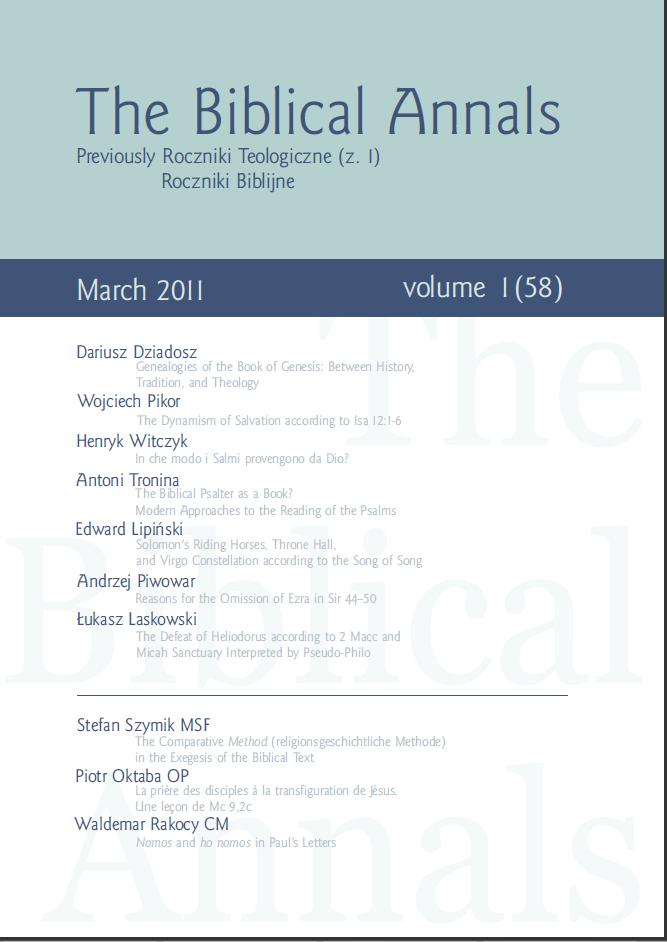Wierzchowce i sala tronowa Salomona oraz gwiazdozbiór Panny wedle Pieśni nad Pieśniami
Solomon’s Riding Horses, Throne Hall, and Virgo Constellation according to the Song of Songs
Author(s): Edward LipińskiSubject(s): Christian Theology and Religion
Published by: Katolicki Uniwersytet Lubelski Jana Pawła II - Wydział Teologii
Keywords: Old Testament; Song of Songs; interpretation; terminology; Akiba; Apadana; Dura-Europos; Ezekiel; Virgo Constellation; Solomon’s throne hall; (Solomon’s) riding horses
Summary/Abstract: The Qumran fragments of the Song of Songs witness some versions of the poem which are older than the textus receptus. They also show that independent songs have been combined into one composition. Thus Cant. 3, 6-8, missing in 4QCantb, was a description of Solomon’s guards on riding horses or camels, for mṭtw is the suffi xed plural of the Arabic and Aramaic noun maṭīyā, designating a riding animal. This passage has been joined to the following poem, starting in Cant. 3, 9 with a description of king’s apadāna, a colonnaded hall or palace. Its fi rst word, borrowed from Old Persian, has indeed been misspelled as ’prywn. Another poem, missing in 4QCanta, corresponds to Cant. 4, 8 - 5, 1. It is written entirely in Aramaic in 4QCantb and the Hebrew textus receptus still preserves traces of its original language. The Aramaic poem refers to the zodiacal constellation Virgo, called Kallā in Aramaic and requested to show the New Moon of Elul above the Lebanon range: ’t mn lbnwn ’b’y, “Let the sign enter from Lebanon”. The Song of Songs in its fi nal shape, characterized by its dramatic features and love lyrics, was accepted as Scripture because of its presumed Solomonic authorship, and it was highly valuated by Akiba, as its contents was appearing to him as a qdš h-qdšym, a play word meaning “the sanctifi cation of betrothals”.
Journal: The Biblical Annals
- Issue Year: 1/2011
- Issue No: 58
- Page Range: 89-103
- Page Count: 14
- Language: Polish

